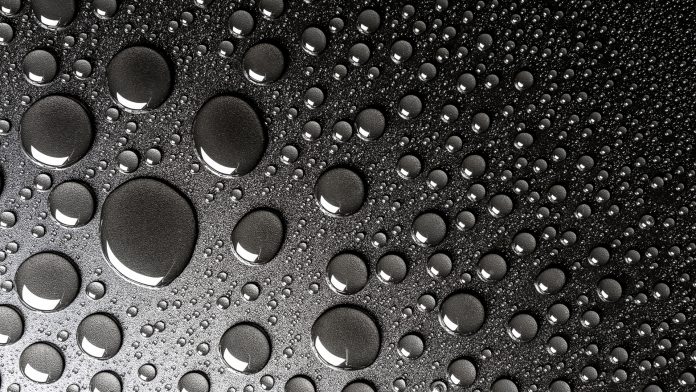A team of researchers from Japan have developed a method of harvesting energy for IoT devices using small droplets of liquid.
Researchers use energy harvesting to transform small quantities of naturally occurring energy, such as kinetic or heat energy, into electricity. This form of gathering energy is gaining traction as a method of powering Internet of Things (IoT) devices.
The use of energy harvesting can help to reduce the impact that IoT devices have on the environment. Unlike batteries which need recharging or replacing, devices powered by energy harvesting also possessing the potential to be powered in a stable long-term manner with minimal waste.
Making waves with small droplets
A team of researchers from Nagoya University and Kyushu University, Japan, have focused their studies on energy from the minuscule movements of liquid. Through this, researchers were able to develop a device that generates over five volts of electricity directly from the movement of liquid droplets.
This device is made of flexible thin films and generates electricity when droplets of water slide down onto its upper surface. The technology developed by the team from Nagoya University and Kyushu University, is expected to be applied to self-powered devices that are used in liquid, such as sensors for monitoring wastewater from factories.
Published in the journal Nano Energy, this study highlighted that “water stores a large amount of clean energy in its dynamic forms. Owing to the wide availability of water and the rising demand for clean energy sources, the direct electricity generation from liquid motion by low-dimensional materials such as graphene has gained much interest.
“Electricity generation is induced by the motion of an electric double layer at the interface between the liquid droplet and solid surface. However, the output voltage with materials such as graphene is still limited to several hundred millivolts.”
This study is the first of its kind to present such efficient results. Previously, energy has been generated from the flow of liquid in factory pipes and even in micro-fluid devices, however, none of which have been as successful.
Researchers have previously used a graphene sheet to generate electricity from the liquid movement across its surface. However, its output voltage is limited to about 0.1 volt, which is not enough to power electronic devices.
What is MoS2 and why is it better than graphene?
The research group, consisting of Nagoya University’s Adha Sukma Aji, Ryohei Nishi, and Yutaka Ohno and Kyushu University’s Hiroki Ago, has demonstrated that using molybdenum disulfide (MoS2) instead of graphene as the active material in the generator makes it possible to generate over 5 volts of electricity from a liquid droplet.
“To use MoS2 for the generator, it was necessary to form a large-area single-layer MoS2 film on a plastic film. With conventional methods, however, it was difficult to grow MoS2 uniformly on a large-area substrate,” says Professor Ohno of the Institute of Materials and Systems for Sustainability at Nagoya University.
Ohno continued: “In our study, we succeeded in fabricating this form of MoS2 film by means of chemical vapour deposition using a sapphire substrate with molybdenum oxide (MoO3) and sulphur powders. We also used a polystyrene film as a bearing material for the MoS2 film, so that we were able to transfer the synthesised MoS2 film to the surface of the plastic film quite easily.”
The newly developed generator is flexible enough to be installed on the curved inner surface of plumbing, and is thus expected to be used to power IoT devices used in liquids, such as self-powered rain gauges and acid rain monitors, as well as water quality sensors that can generate power from industrial wastewater while monitoring it.
Professor Ohno highlighted: “Our MoS2 nanogenerator is able to harvest energy from multiple forms of liquid motion, including droplets, spraying, and sea waves. From a broader perspective, this device could also be used in applications involving hydrodynamics, such as generating electricity from rainwater and waterfalls.”
Want to keep connected with news from Innovation News Network? Subscribe now to our newsletter here.







